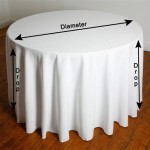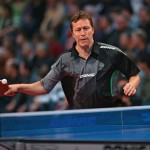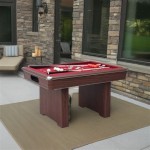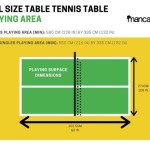Brunswick Pool Table Ball Return Parts: A Comprehensive Guide
Maintaining a Brunswick pool table's functionality requires understanding the intricate system of components, particularly those responsible for the ball return mechanism. This mechanism facilitates the efficient gathering and delivery of pocketed balls to a designated location, enhancing gameplay by minimizing interruptions. Identifying and understanding the specific parts within this system is crucial for troubleshooting issues, performing maintenance, and ensuring the smooth operation of the pool table.
Brunswick pool tables, renowned for their quality and durability, utilize a robust ball return system typically comprising various interconnected parts. These parts work in concert to guide balls from the pockets, through a series of channels, and ultimately to the collection area. Recognizing the function of each component is vital for proper upkeep and timely replacement when necessary.
This article provides a detailed examination of the key Brunswick pool table ball return parts, explaining their individual roles and their collective contribution to the overall functionality of the system. Knowledge of these components empowers pool table owners and technicians to effectively diagnose and resolve common problems, ensuring optimal playing conditions.
Key Components of the Brunswick Ball Return System
The Brunswick ball return system consists of several interconnected parts, each playing a critical role in the movement of balls from the pockets to the ball return trough. These components can be broadly categorized into: pocket liners/buckets, ball rails/tracks, diverters/switches, and the final ball return trough itself. The following details the function of each of these components:
Pocket Liners/Buckets
The initial receiving point for pocketed balls are the pocket liners, sometimes referred to as pocket buckets. These components are typically constructed from durable rubber or plastic, designed to absorb the impact of the balls and direct them towards the ball rails. The material must be resilient enough to withstand repeated impacts without cracking or tearing. Damage to the pocket liners can disrupt the smooth flow of balls into the return system, potentially causing jams or misdirection.
The design of the pocket liners is crucial for proper ball capture and redirection. They are often shaped to create a smooth transition from the pocket opening to the ball rails, minimizing the risk of balls bouncing out or getting stuck. Some Brunswick pool tables feature pocket liners with specific angles or contours to optimize ball flow based on the table's overall design.
Different Brunswick models may utilize varying types of pocket liners, depending on the table's construction and intended use. Some liners are designed for easy replacement, while others may be permanently integrated into the pocket structure. Regular inspection of the pocket liners is recommended to identify any signs of wear or damage, allowing for timely replacement and preventing further complications.
Ball Rails/Tracks
Following the pocket liners, the ball rails, also known as ball tracks, form the primary pathway for balls traveling from the pockets to the ball return trough. These rails are typically constructed from metal or durable plastic and are strategically positioned beneath the playing surface to channel the balls efficiently. The design and alignment of the ball rails are crucial for maintaining a consistent and unobstructed flow.
The configuration of the ball rails can vary depending on the table's design. Some tables utilize a single continuous rail extending from one set of pockets to the other, while others employ multiple interconnected rails. Regardless of the configuration, the rails must be properly aligned and secured to prevent balls from deviating from their intended path.
Any obstructions or misalignments along the ball rails can impede the smooth flow of balls, leading to jams or delays in the return process. Debris, such as felt lint or small objects, can accumulate within the rails, causing friction and hindering ball movement. Regular cleaning and inspection of the ball rails are essential for maintaining optimal performance.
Furthermore, the material and construction of the ball rails play a significant role in their durability and resistance to wear. Metal rails are generally more robust and resistant to deformation, while plastic rails may be more susceptible to damage from impacts or excessive weight. The choice of material often depends on the table's overall design and the intended level of use.
Diverters/Switches
Diverters or switches are strategically placed along the ball rails to redirect the flow of balls towards the appropriate side of the table and ultimately into the ball return trough. These mechanisms ensure that balls from different pockets are efficiently channeled to the designated collection area. The design and operation of the diverters can vary depending on the table's model and configuration.
Some diverters utilize a simple pivoting mechanism that redirects balls based on their trajectory. As a ball approaches the diverter, it triggers a switch that alters the angle of the rail, guiding the ball towards the appropriate channel. Other diverters may employ more complex mechanisms, such as spring-loaded gates or electronic sensors, to optimize ball flow and prevent jams.
Proper functioning of the diverters is essential for maintaining the efficiency of the ball return system. Malfunctions in the diverter mechanisms can lead to balls being misdirected or getting stuck, disrupting the gameplay. Regular inspection and lubrication of the diverters can help ensure their smooth operation and prevent premature wear.
The placement and alignment of the diverters are also critical factors in their effectiveness. The diverters must be positioned precisely along the ball rails to ensure that balls are redirected accurately and reliably. Any misalignment or obstruction can compromise the diverter's ability to function properly.
Ball Return Trough
The final destination for the pocketed balls is the ball return trough, which serves as the collection point for all the balls returned from the pockets. This trough is typically located on one or both sides of the pool table and is designed to hold the balls in a convenient location for players to retrieve them. The design and construction of the ball return trough can vary depending on the table's model and style.
The trough is usually constructed from wood, plastic, or metal and is designed to be durable and resistant to wear. The interior surface of the trough is often lined with a soft material, such as felt or rubber, to cushion the impact of the balls and prevent scratching or damage. The size and shape of the trough are determined by the number of balls it is designed to hold and the overall aesthetics of the pool table.
The ball return trough must be properly installed and aligned to ensure that balls are smoothly deposited into it. Any misalignment or obstruction can cause balls to bounce out or get stuck, disrupting the gameplay. Regular cleaning of the trough is also important to remove any debris or dirt that may accumulate over time.
Some Brunswick pool tables feature ball return troughs with additional features, such as built-in ball counters or automatic ball dispensers. These features enhance the convenience and functionality of the ball return system, providing players with additional information and control.
Common Problems and Troubleshooting
Despite the robust design of Brunswick pool table ball return systems, occasional problems may arise, requiring troubleshooting and repair. Common issues include ball jams, slow ball return, misdirected balls, and damaged components. Identifying the specific cause of the problem is crucial for implementing the appropriate solution.
One of the most common problems is ball jams, which typically occur due to obstructions or misalignments within the ball rails or diverters. Debris, such as felt lint or small objects, can accumulate within the rails, creating friction and hindering ball movement. Misalignment of the rails or diverters can also cause balls to get stuck or deviate from their intended path.
Slow ball return can be caused by a variety of factors, including worn or damaged ball rails, insufficient lubrication, or obstructions within the system. Over time, the ball rails may become worn or corroded, increasing friction and slowing down ball movement. Lack of lubrication can also contribute to increased friction and reduced efficiency. Obstructions, such as debris or foreign objects, can impede the smooth flow of balls through the system.
Misdirected balls, where balls are returned to the wrong side of the table or are improperly channeled, are often caused by malfunctioning diverters or misaligned ball rails. The diverters may be damaged or improperly adjusted, causing them to redirect balls incorrectly. Misalignment of the ball rails can also lead to balls being diverted to the wrong channels.
Damaged components, such as cracked pocket liners, broken ball rails, or malfunctioning diverters, can also cause a variety of problems. Cracks in the pocket liners can disrupt the smooth flow of balls into the return system. Broken ball rails can create obstructions or misalignments, hindering ball movement. Malfunctioning diverters can lead to misdirected balls or jams.
Troubleshooting these problems requires a systematic approach, starting with a visual inspection of the ball return system. Check for any obvious obstructions, misalignments, or damaged components. Clean the ball rails and diverters to remove any debris or dirt. Lubricate the moving parts to reduce friction and improve efficiency. If necessary, replace any damaged components with new ones.
Preventative Maintenance for Longevity
Regular preventative maintenance is essential for ensuring the longevity and optimal performance of a Brunswick pool table ball return system. Simple maintenance tasks, such as cleaning, lubrication, and inspection, can significantly extend the lifespan of the system and prevent costly repairs. Establishing a routine maintenance schedule is highly recommended.
Cleaning the ball return system should be performed on a regular basis to remove any debris or dirt that may accumulate over time. Use a soft brush or vacuum cleaner to remove felt lint, dust, and other particles from the ball rails, pocket liners, and ball return trough. Avoid using harsh chemicals or abrasive cleaners, as these can damage the components.
Lubricating the moving parts of the ball return system, such as the diverters and switches, is also important for maintaining smooth operation. Use a light, non-greasy lubricant specifically designed for moving parts. Apply the lubricant sparingly to avoid attracting dust and dirt. Regular lubrication helps to reduce friction and prevent premature wear.
Inspecting the ball return system for any signs of wear or damage is crucial for identifying potential problems before they escalate. Check the pocket liners for cracks or tears. Examine the ball rails for corrosion or misalignment. Inspect the diverters for proper functioning and alignment. Replace any damaged components promptly to prevent further complications.
Another aspect of preventative maintenance is ensuring proper table leveling. An unlevel table can cause balls to roll unevenly, potentially impacting the ball return system's efficiency. Regularly check and adjust the table's level to ensure optimal gameplay and minimize stress on the ball return components.
By incorporating these preventative maintenance practices into a regular routine, pool table owners can significantly extend the life of their Brunswick ball return system and maintain optimal playing conditions. Consistent care and attention will help to prevent costly repairs and ensure years of enjoyable gameplay.

High Quality Replacement For Factory Return Style Pockets Brunswick Gold Crown 1 2 3 Set Of 6

Centennial 9 Pool Table Brunswick Billiards

Brunswick Centennial Pool Table Robbies Billiards

Brunswick Pool Table Parts Only Decommissioned Govdeals

Pool Table Drop Pockets Vs Ball Return Home Leisure Direct

Brunswick Catalog Billiards

Brunswick Billiards Centennial Pool Table Game Room Spot

Centennial 9 Pool Table Brunswick Billiards

9 Ft Wood Dynamic Ii Billiard Jmc Billard

Brunswick Billiards Gold Crown Vi 9 Slate Pool Table In Matte Black W Game World Planet
Related Posts








